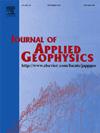The effective signal reconstruction of CSEM data with strong interference using inter-station transfer function
IF 2.1
3区 地球科学
Q2 GEOSCIENCES, MULTIDISCIPLINARY
引用次数: 0
Abstract
The impact of spatial and temporal superposition with various noises in strong interference areas is significant, leading to severe and complex influences for electromagnetic exploration. Previous methods for signal processing of Controlled-Source Electromagnetic Method (CSEM) data have primarily focused on single-channel analysis, thereby neglecting the correlation between the channels and resulting in unnecessary errors. Based on the synchronous observed data and remote reference theory of Magnetotelluric (MT), we put forward a data processing method using the inter-station transfer function to reconstruct the effective signal of CSEM data. In contrast with the conventional CSEM denoising approach, the seasonal-trend decomposition based on Loess (STL) is first used to remove the long-period nonlinear baseline drift and large-scale step noise of the strongly interfering signal. Secondly, we need to select a high-quality reference signal from the synchronous data and data fragments without noise of local signal by the ratio of variance (ROV), followed by a stable inter-station transfer function is calculated. This function and the synchronous reference signal are employed to achieve the high-precision reconstruction of the effective signal from the strongly interfering local signal, thereby enhancing the signal-to-noise ratio (SNR) of the observed data. The validity and practicability are verified by the simulated and measured data of Wide Field Electromagnetic Method (WFEM). The results demonstrate that the method we proposed not only considers the correlation between synchronously multi-channel data but also effectively suppresses strong electromagnetic interference and the extra field work is not necessary, which has a broad range of potential applications in the context of strong interference areas.
利用站间传输函数对强干扰条件下的可控源电磁数据进行有效的信号重构
强干扰区各种噪声的时空叠加影响显著,对电磁勘探的影响严重而复杂。以往可控源电磁法(CSEM)数据的信号处理方法主要集中在单通道分析上,忽略了通道之间的相关性,产生了不必要的误差。基于大地电磁的同步观测数据和远程参考理论,提出了利用台间传递函数重构大地电磁有效信号的数据处理方法。与传统的CSEM去噪方法相比,首先采用基于黄土的季节趋势分解(STL)方法去除强干扰信号的长周期非线性基线漂移和大尺度阶跃噪声。其次,通过方差比(ROV)从同步数据和局部信号无噪声的数据片段中选择高质量的参考信号,然后计算稳定的站间传递函数;利用该函数与同步参考信号实现对强干扰局部信号的有效信号的高精度重构,从而提高观测数据的信噪比。通过广域电磁法(WFEM)的仿真和实测数据,验证了该方法的有效性和实用性。结果表明,该方法不仅考虑了同步多通道数据之间的相关性,而且有效地抑制了强电磁干扰,无需额外的场强工作,在强干扰区域具有广泛的应用前景。
本文章由计算机程序翻译,如有差异,请以英文原文为准。
求助全文
约1分钟内获得全文
求助全文
来源期刊

Journal of Applied Geophysics
地学-地球科学综合
CiteScore
3.60
自引率
10.00%
发文量
274
审稿时长
4 months
期刊介绍:
The Journal of Applied Geophysics with its key objective of responding to pertinent and timely needs, places particular emphasis on methodological developments and innovative applications of geophysical techniques for addressing environmental, engineering, and hydrological problems. Related topical research in exploration geophysics and in soil and rock physics is also covered by the Journal of Applied Geophysics.
 求助内容:
求助内容: 应助结果提醒方式:
应助结果提醒方式:


